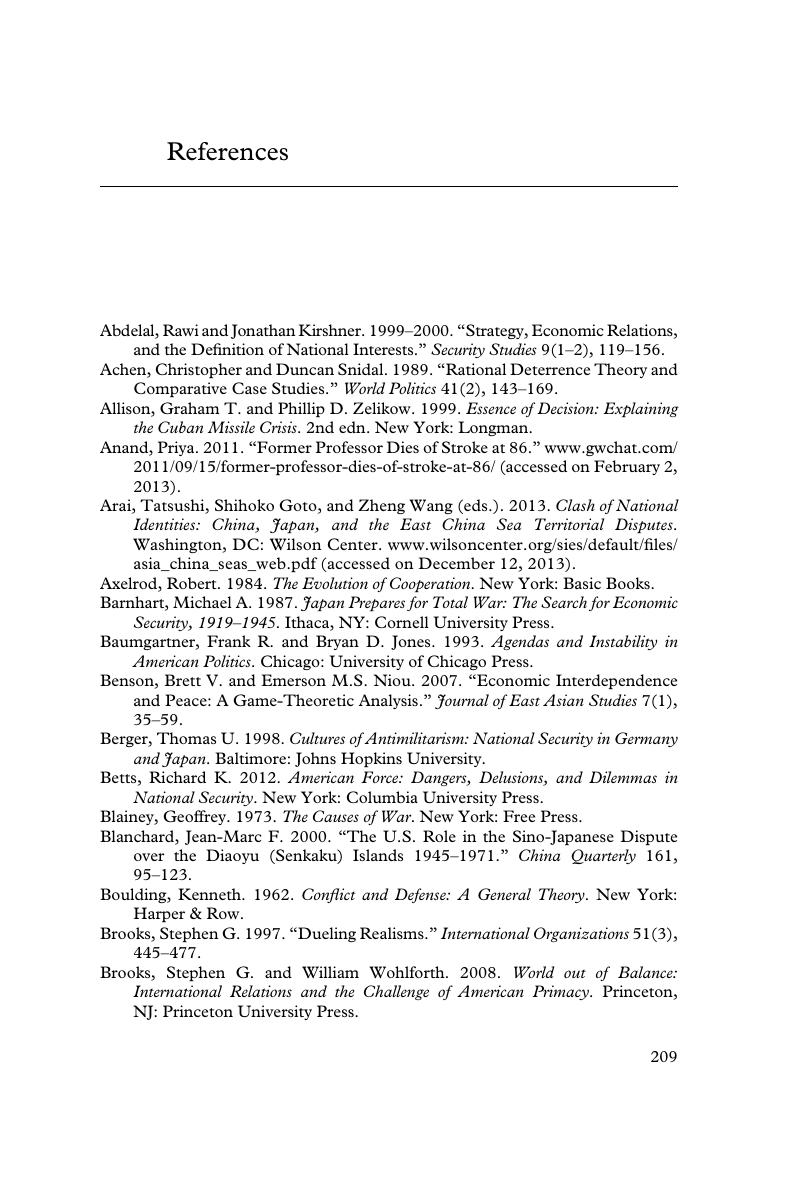Book contents
- China’s Troubled Waters
- China’s Troubled Waters
- Copyright page
- Contents
- Preface
- 1 Embedding China’s maritime disputes in generic IR research
- 2 Territorial conflicts
- 3 Trust, reassurance, and credible commitment
- 4 Deterrence theories
- 5 Taiwan’s two-level interactions with China
- 6 Multilateralism in the East and South China Sea disputes
- 7 Conclusion
- References
- Name Index
- Subject Index
- References
References
Published online by Cambridge University Press: 05 February 2016
- China’s Troubled Waters
- China’s Troubled Waters
- Copyright page
- Contents
- Preface
- 1 Embedding China’s maritime disputes in generic IR research
- 2 Territorial conflicts
- 3 Trust, reassurance, and credible commitment
- 4 Deterrence theories
- 5 Taiwan’s two-level interactions with China
- 6 Multilateralism in the East and South China Sea disputes
- 7 Conclusion
- References
- Name Index
- Subject Index
- References
Summary

- Type
- Chapter
- Information
- China's Troubled WatersMaritime Disputes in Theoretical Perspective, pp. 209 - 226Publisher: Cambridge University PressPrint publication year: 2016



